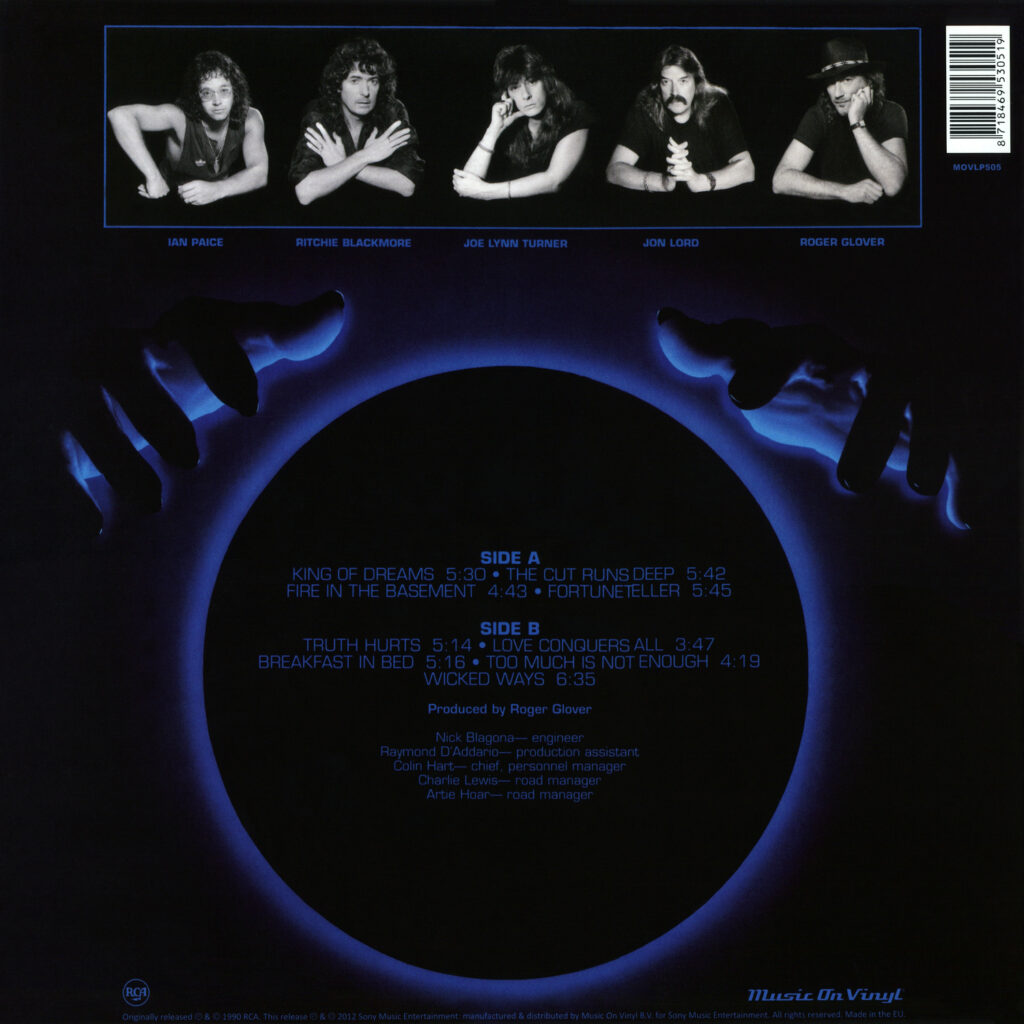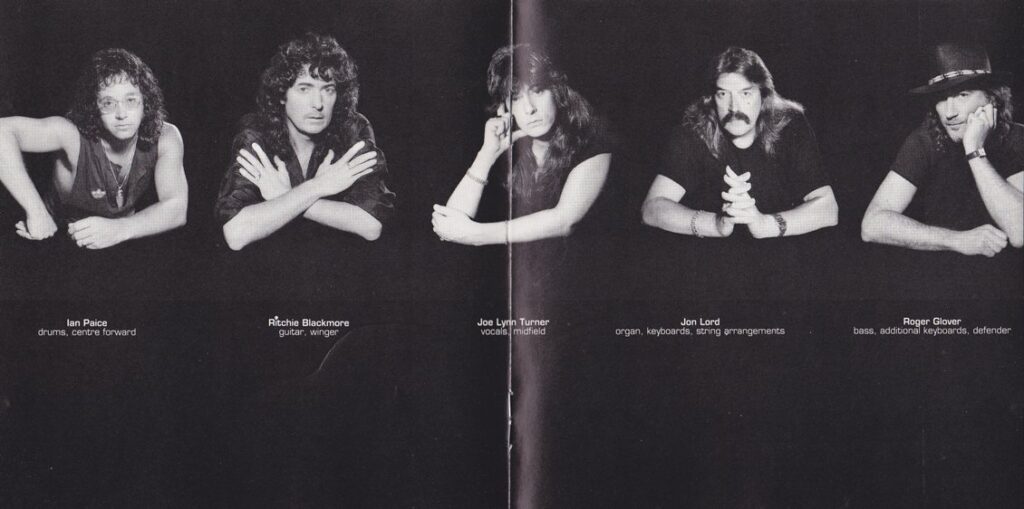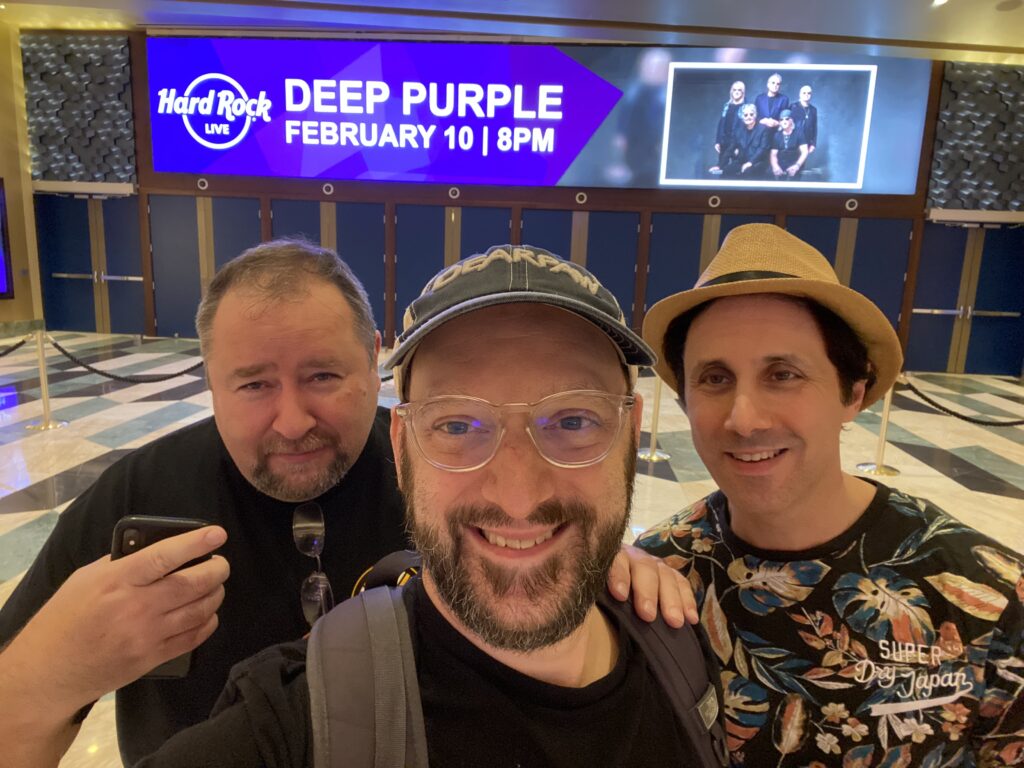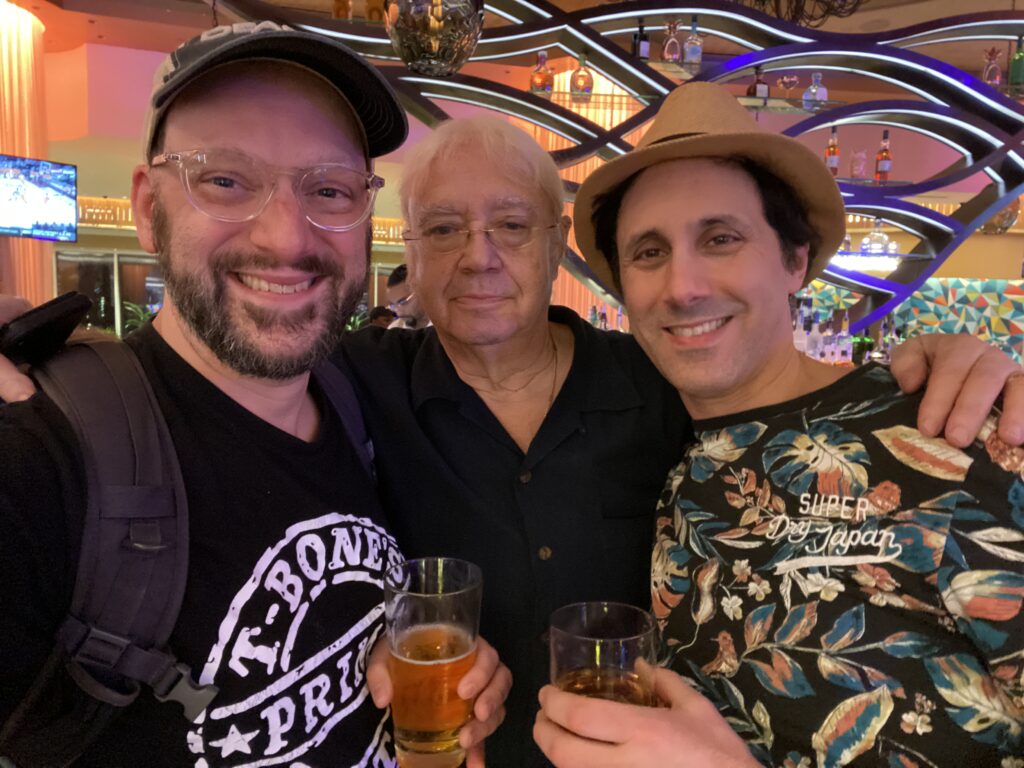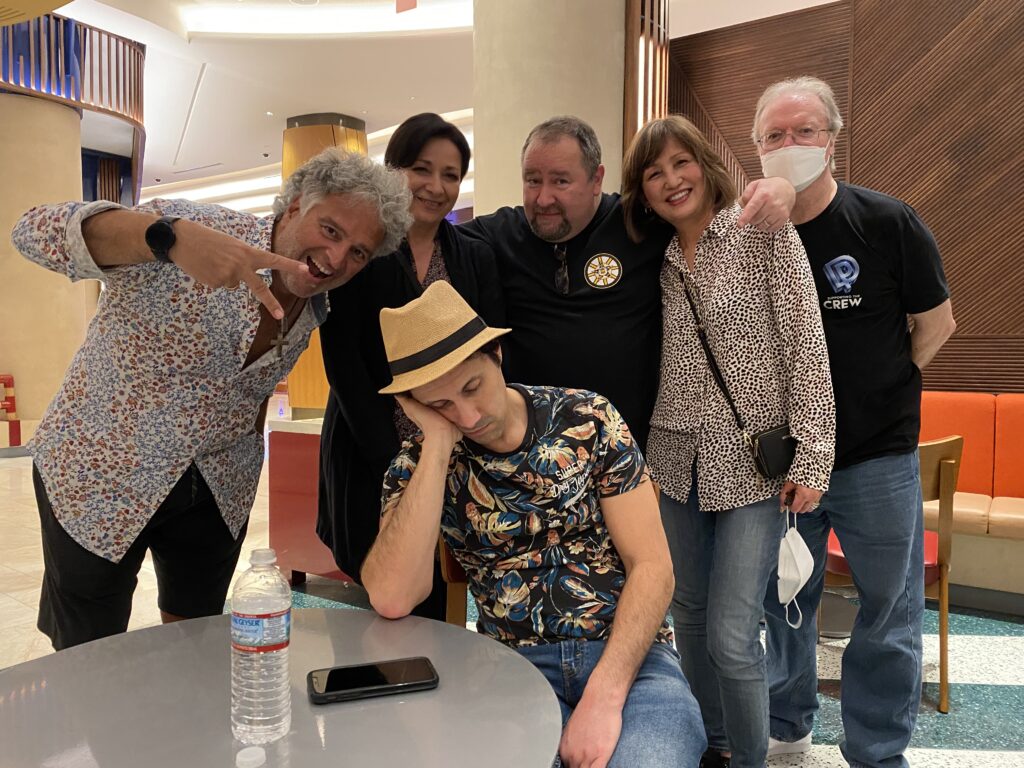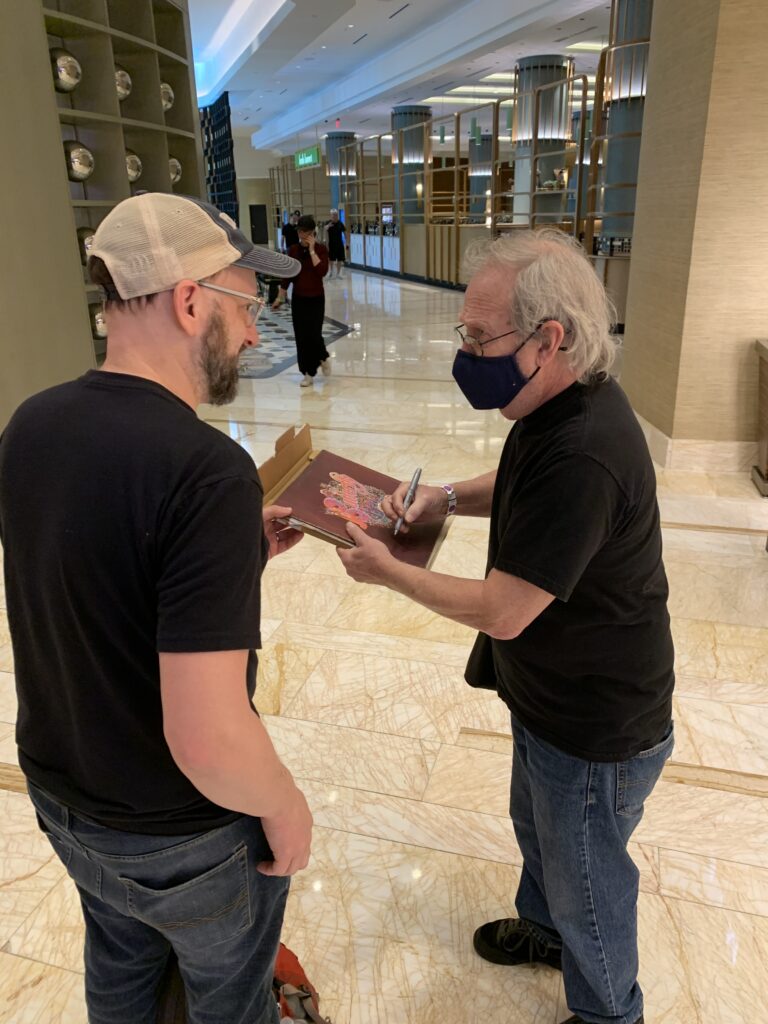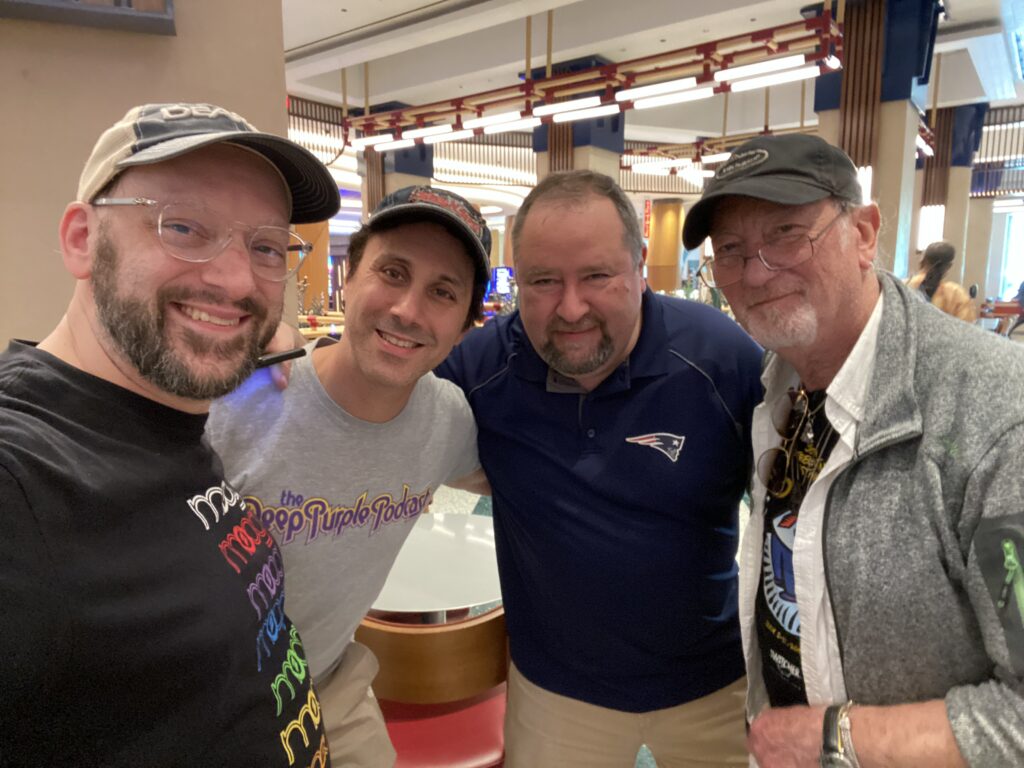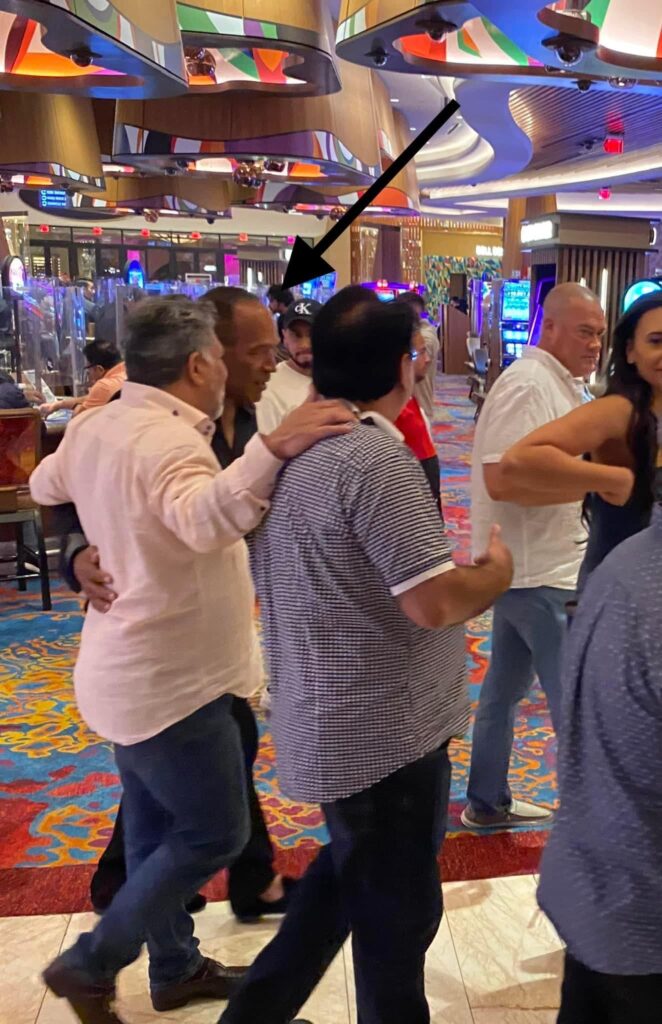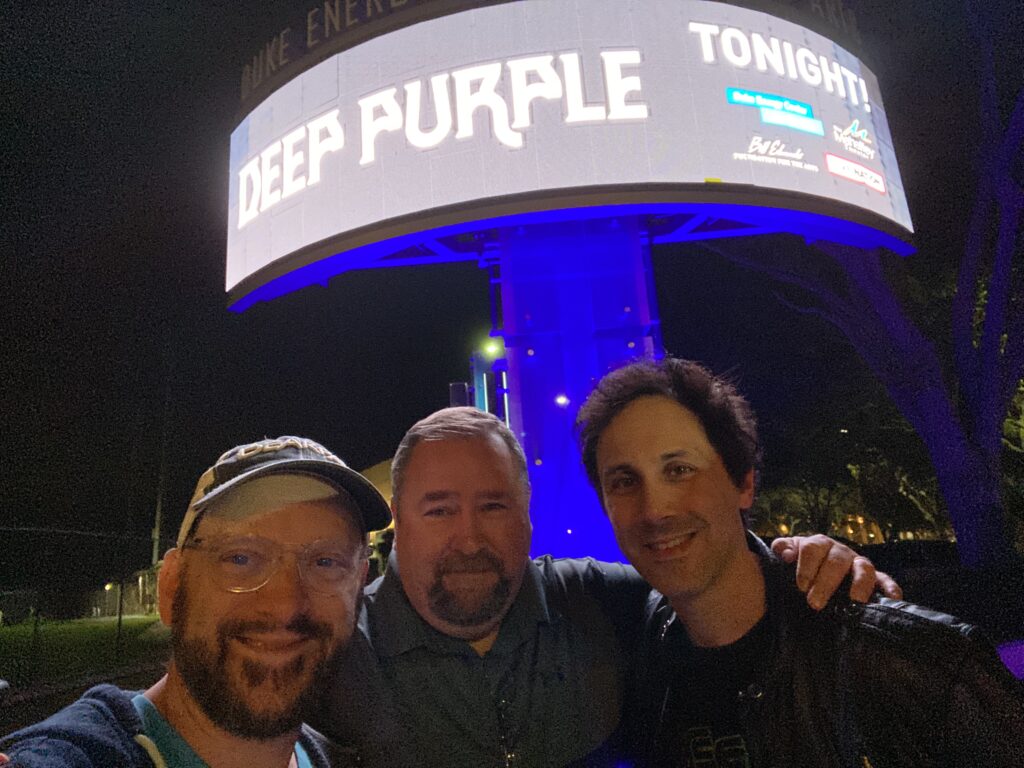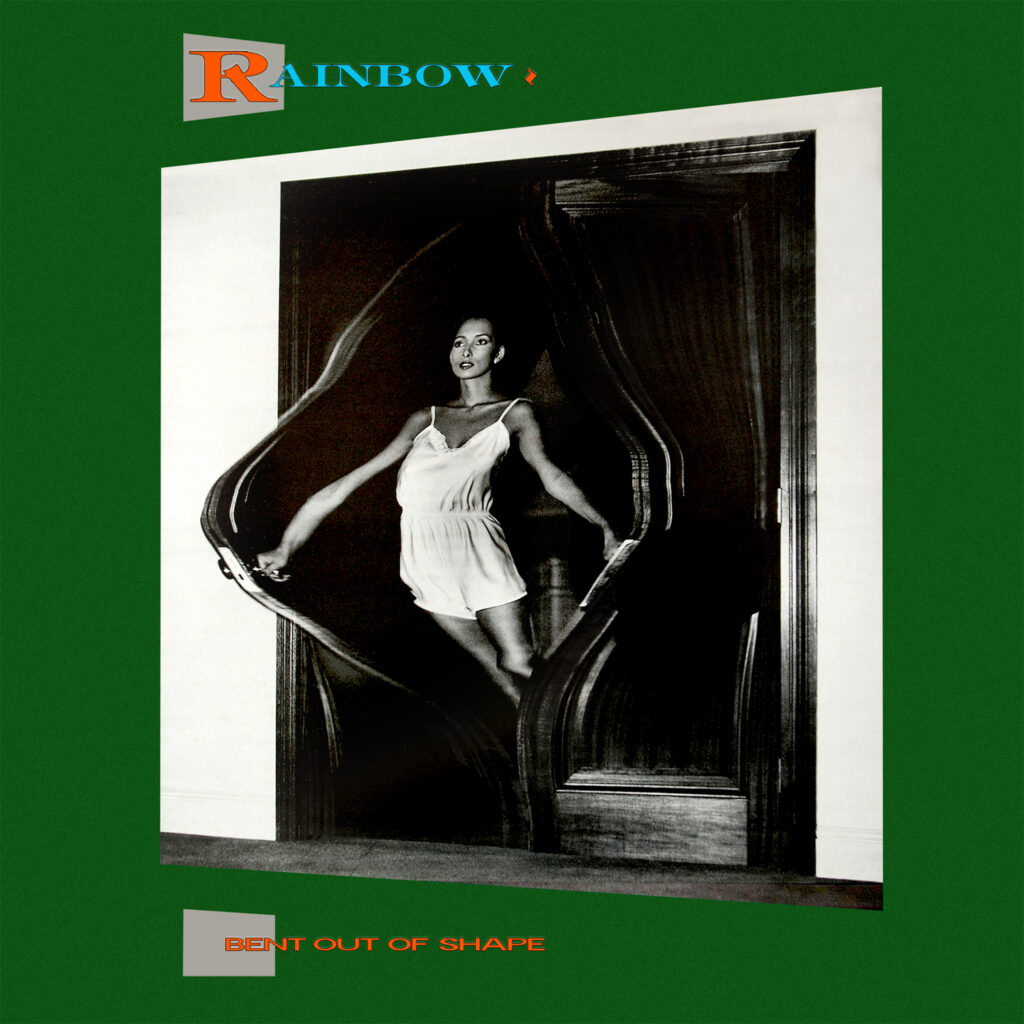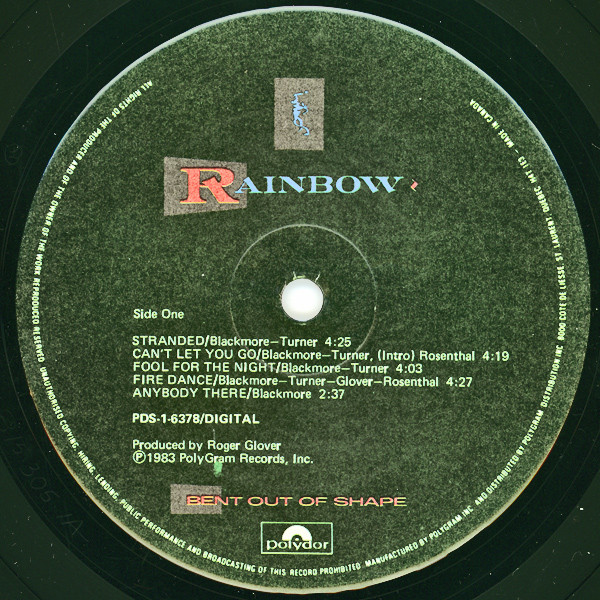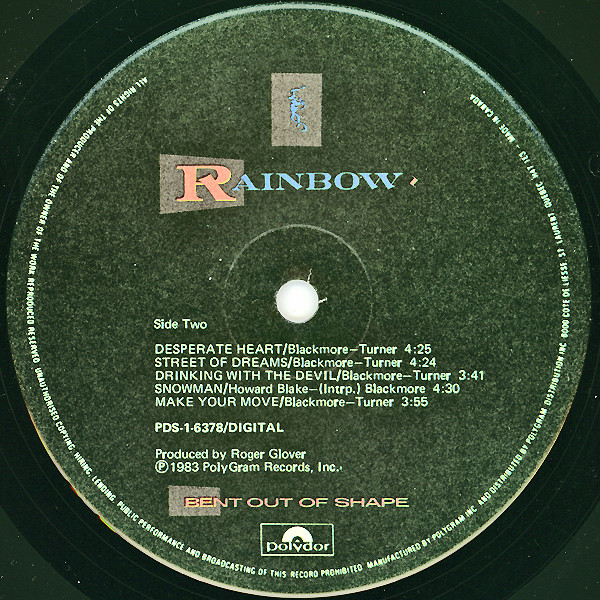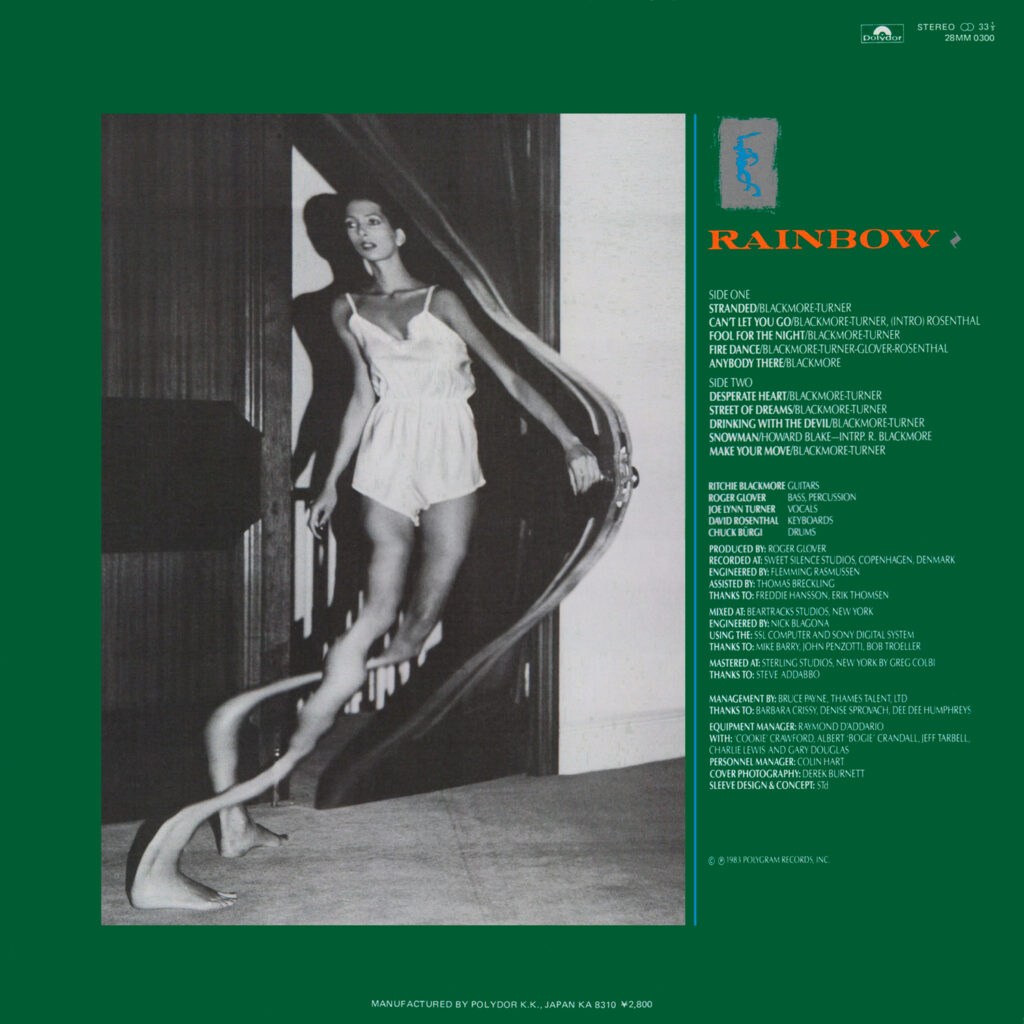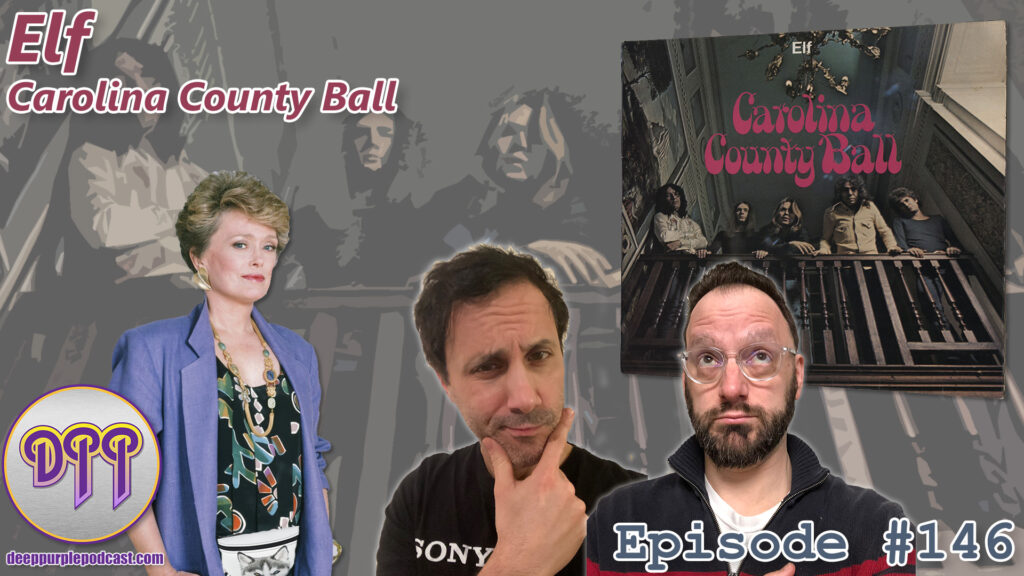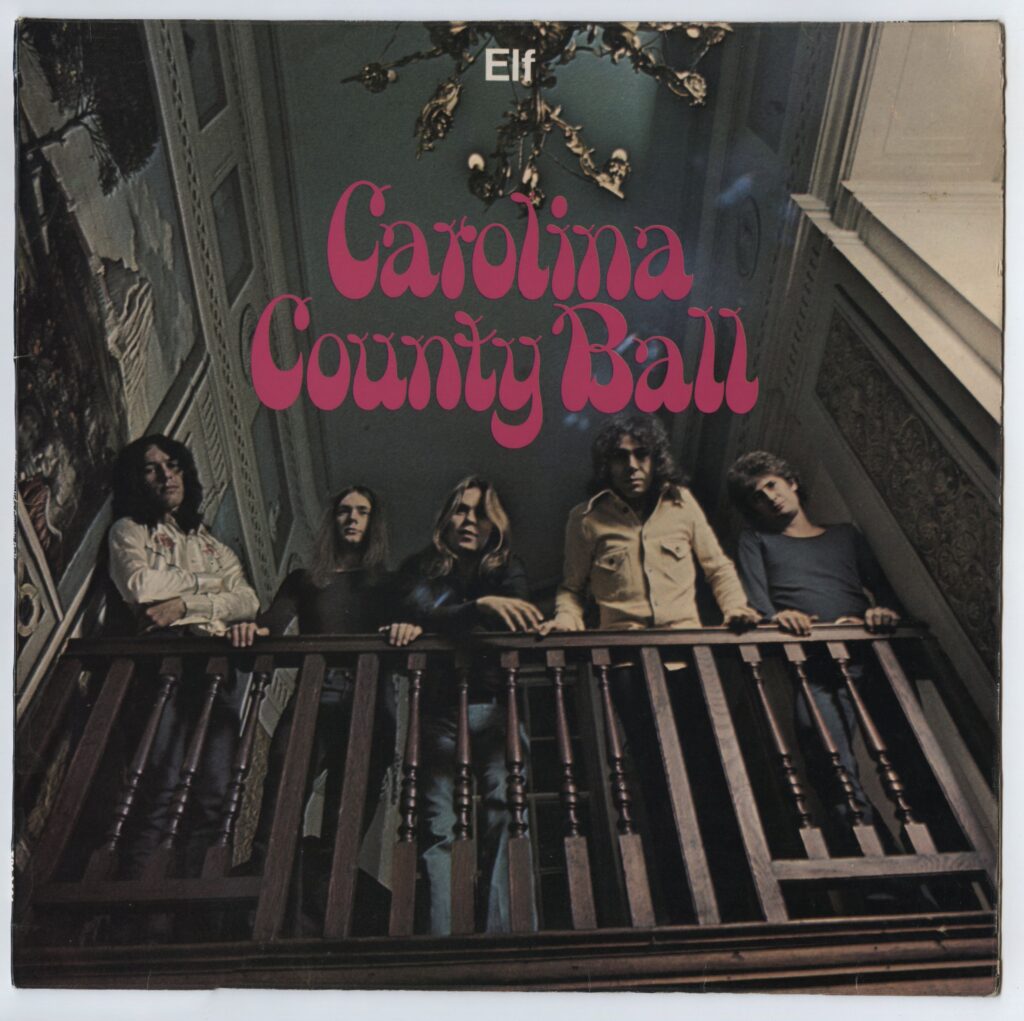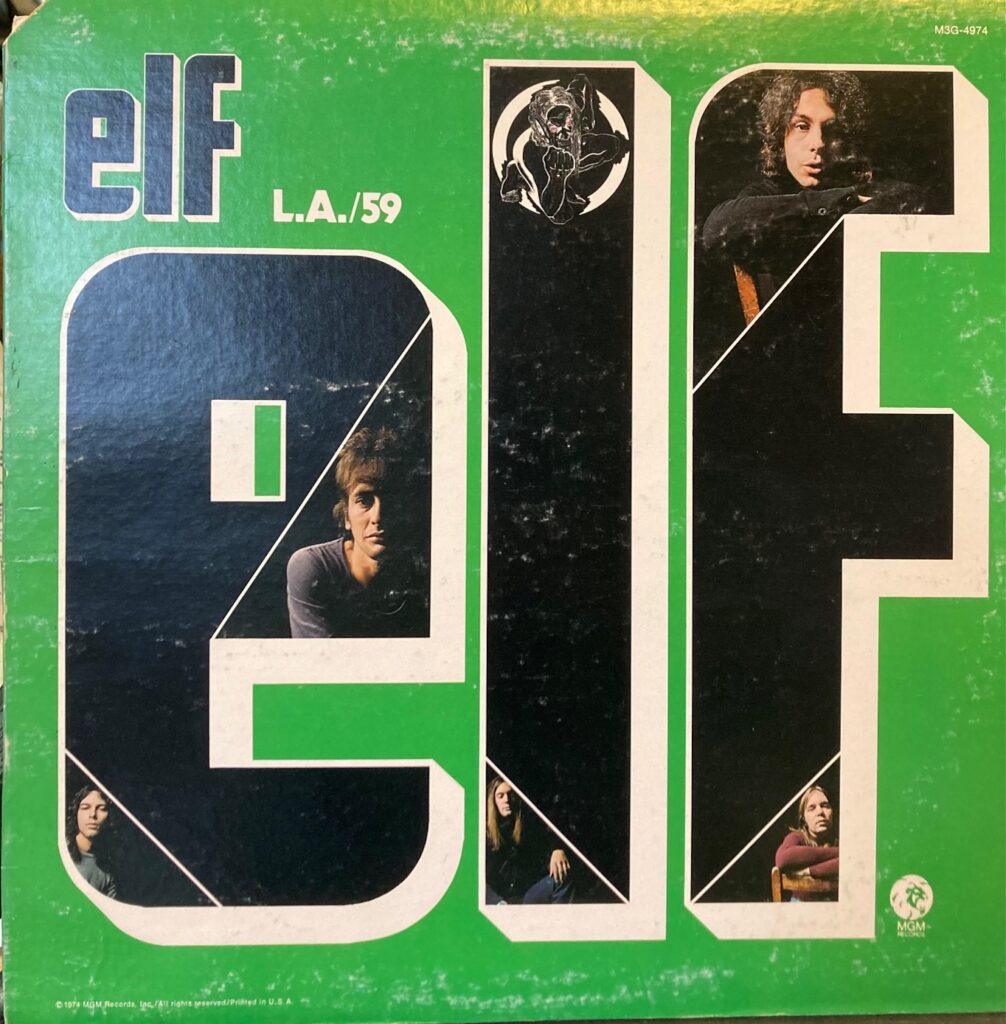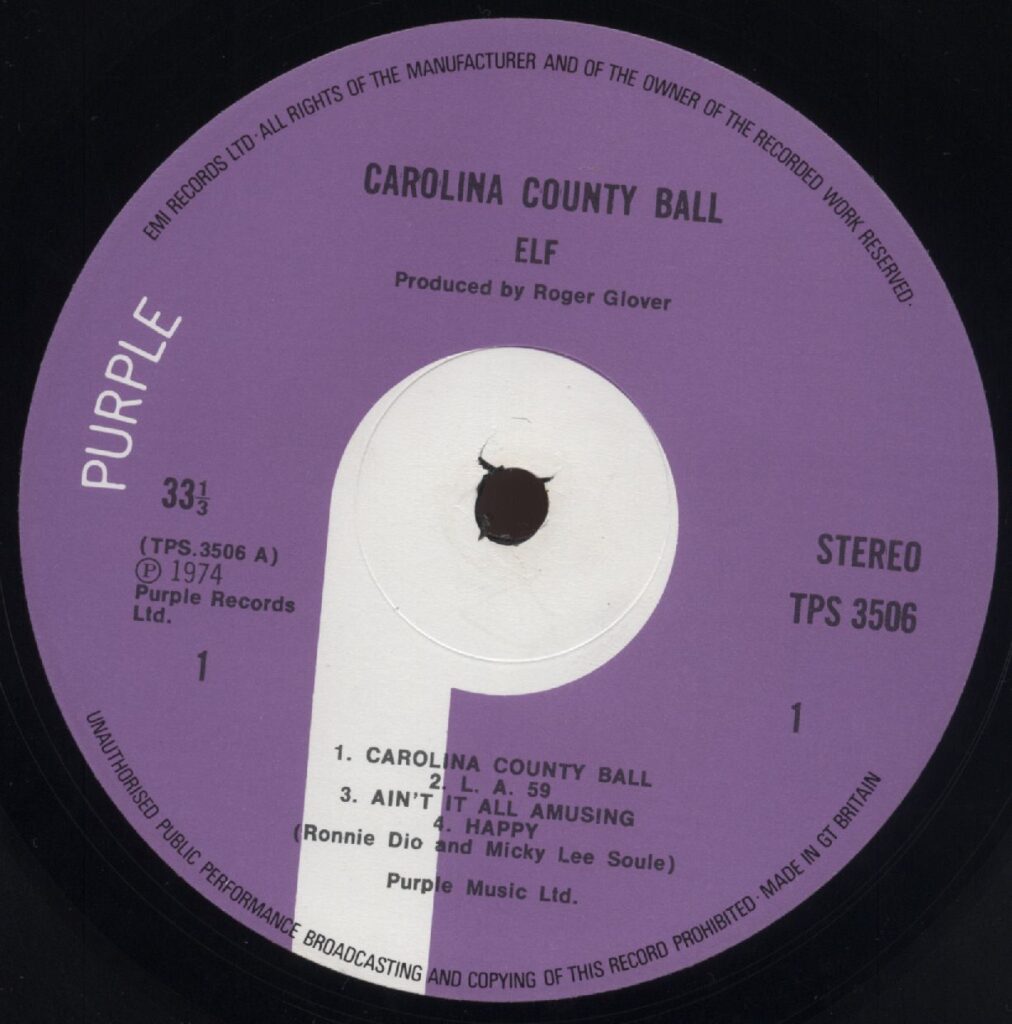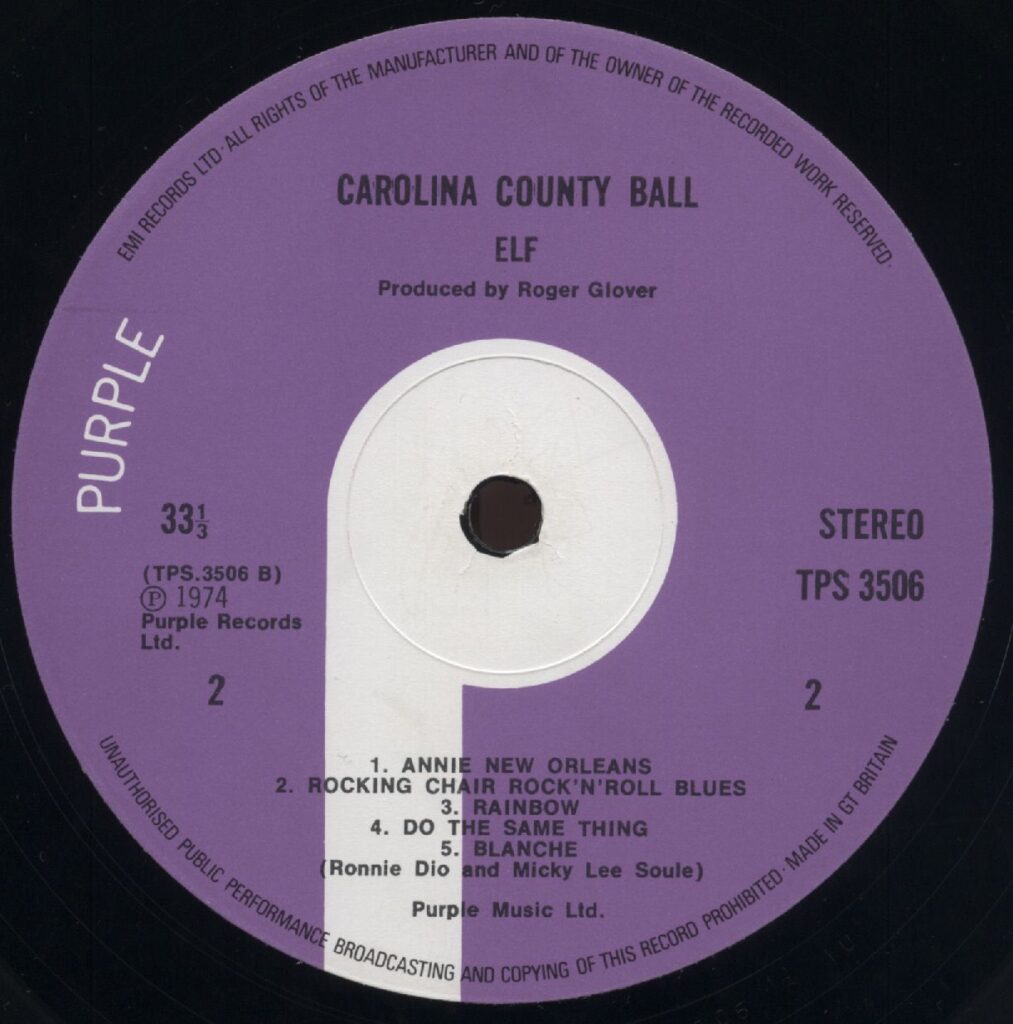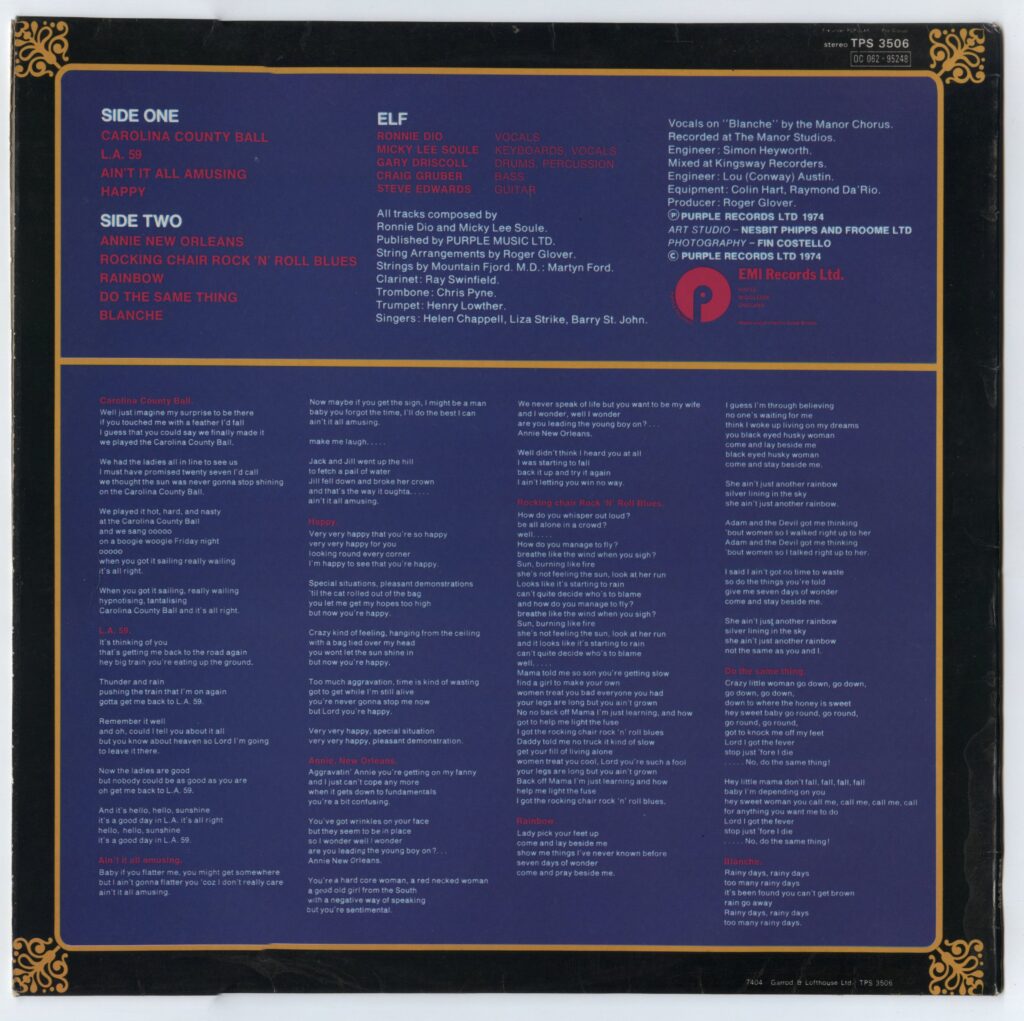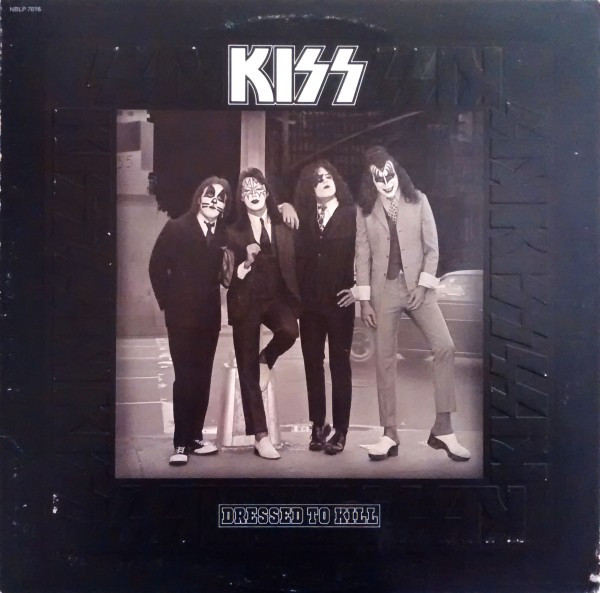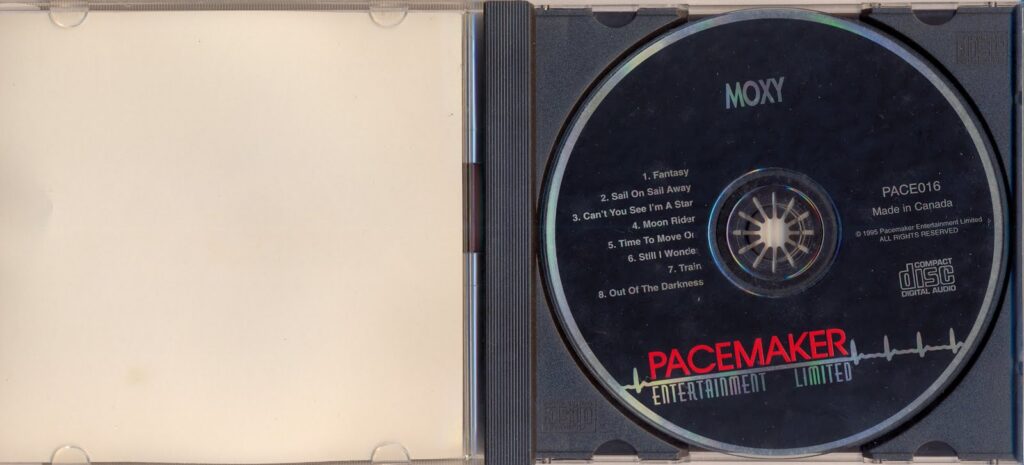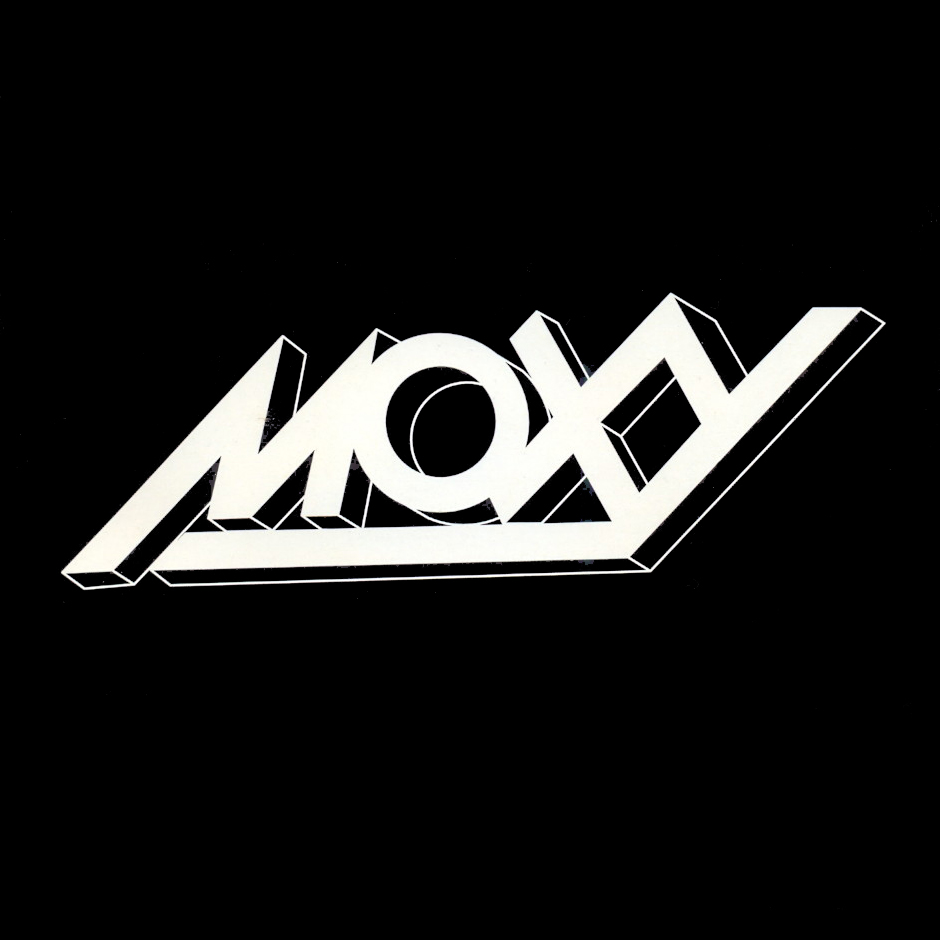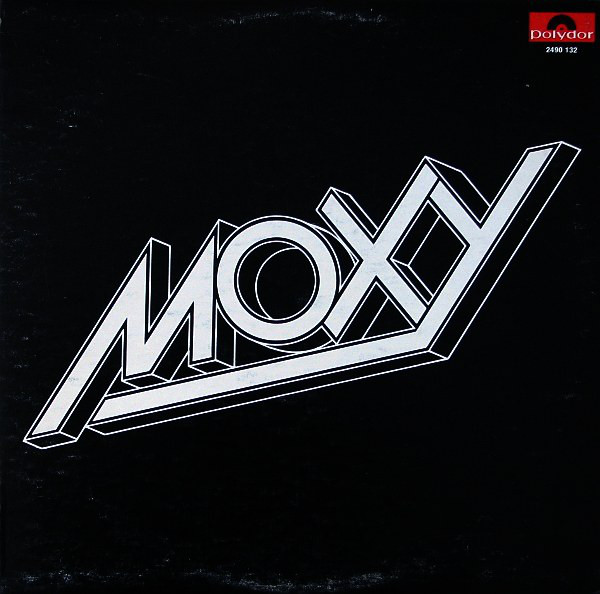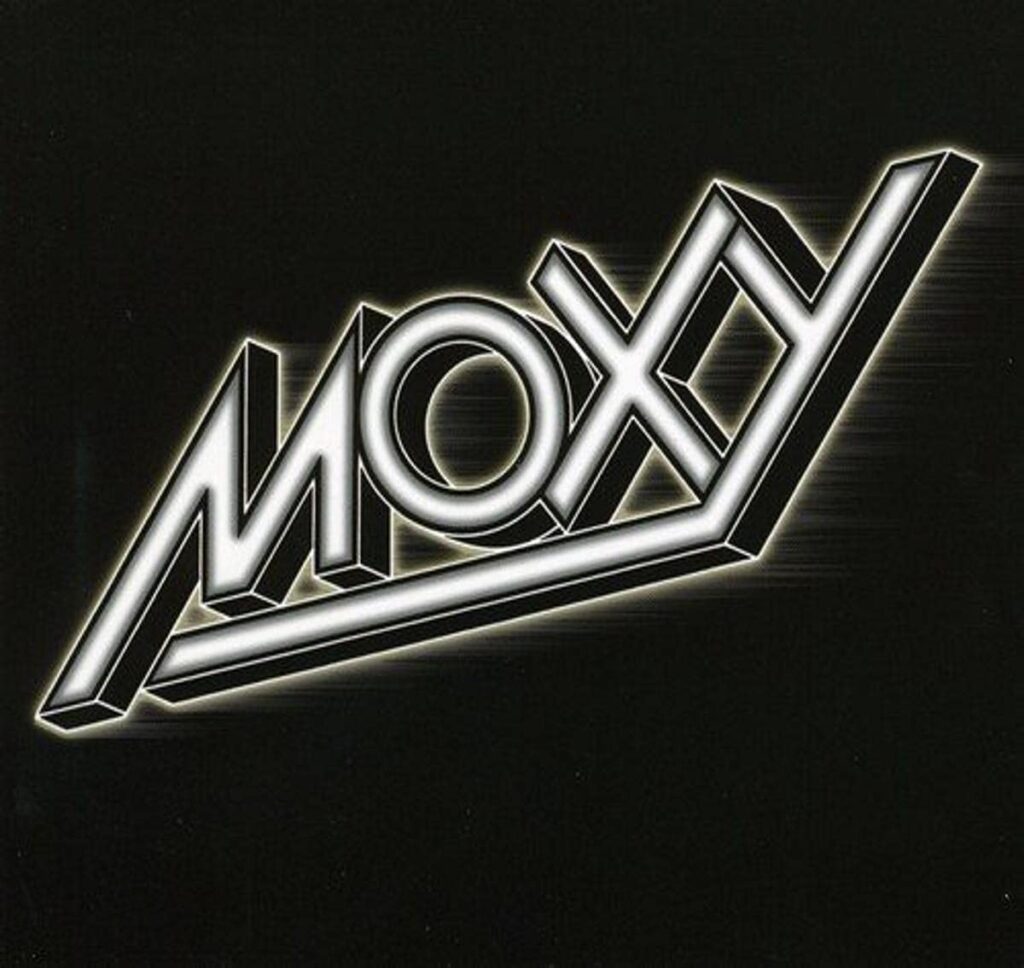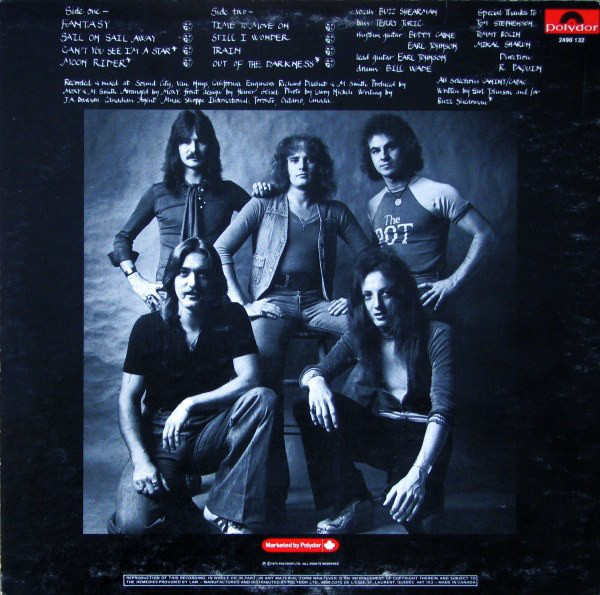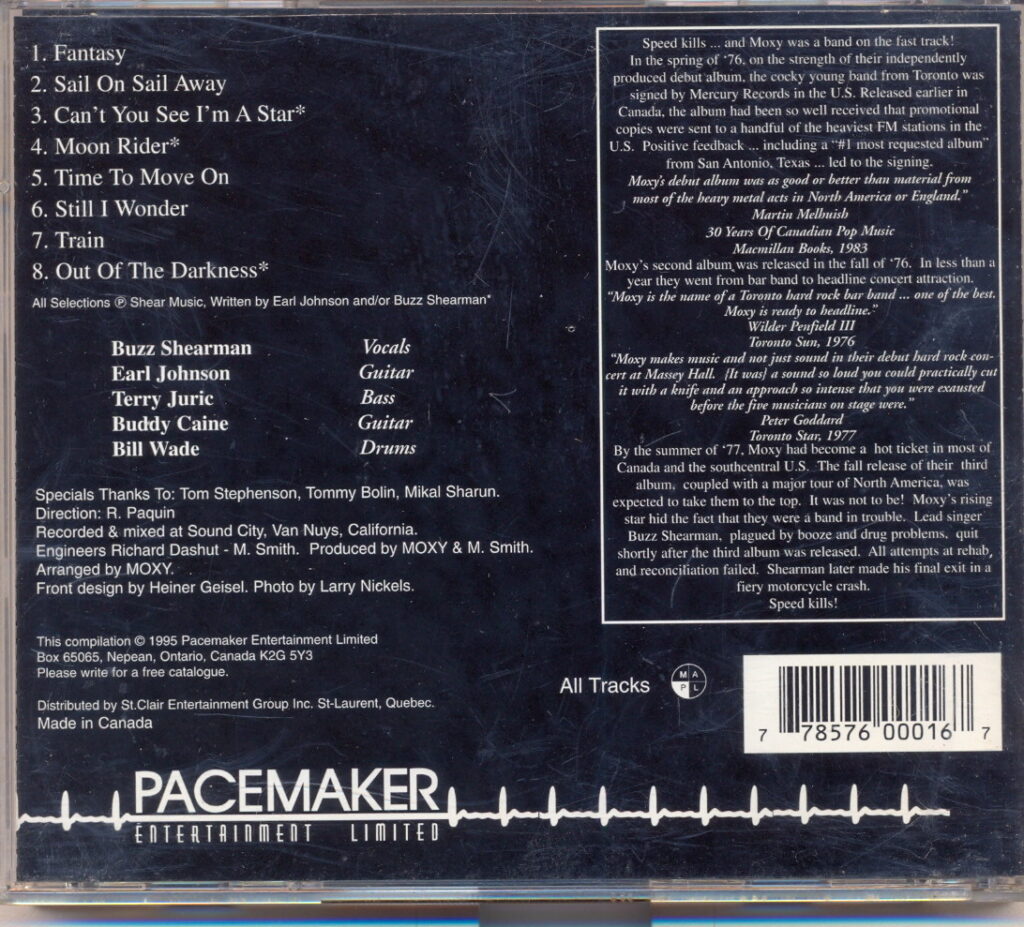Subscribe at Apple Podcasts, Stitcher, Google Podcasts, Overcast, Pocket Casts, Anchor.fm, Breaker, PodBean, RadioPublic, Amazon Music, or search in your favorite podcatcher!
How To Support Our Show:
- Leave us a 5-Star Review on Apple Podcasts
- Buy Merch at Our Etsy Store!
- Become a Patron on Patreon
- Donate on Paypal (Donate one time or click “make this a monthly donation” box)
Thanks to Our Executive Level Patrons:
- The $21.12 “Long Live Rock ‘n’ Roll” Tier
- Richard Fusey
- The £10 Tier
- Dr. Jill Breis
- The Turn it up to $11 Tier
- Clay Wombacher
- Frank Theilgaard-Mortensen
- Alan “Ain’t Too Proud To” Begg
- Mikkel Steen
- $10 “Some One Came” Tier
- Ryan M
- Jeff Breis
- Gerald Kelly – Paypal
- Victor Campos
- “Better Call” Saul Evans
Patron Updates:
- Steve Coldwell writes: “Thanks to our February school vacation schedule, I just got around to listening to this episode on Friday while shoveling snow…just in time to encounter my own version of “the Dixie Dregs guy,” at a Dream Theater show in Boston, Friday night. This particular gentleman—who looked like he was solidly in his 70s— doubled down on your Dixie Dregs fan, and actually had TWO catchphrases that he was screaming at the top of his lungs: alternating between “Boston matters,” and the oddly off-brand for Dream Theater, “Git ‘er done!”
Listener Message regarding Florida Show Recap:
- Michael reaches out regarding his reaction to our Florida show:
Apple Podcasts Reviews:
- Deep blackmore – USA – 5 Stars!
- Great podcast!!!
- Been a fan of deep purple for more years then I can remember recent episode for elf Carolina county ball / la59 album even if the hosts didn’t like the album this is the album that turned me on to the great Ronnie James Dio and the saw elf open for electric light orchestra and deep purple way back in 1974 in Indianapolis indiana keep up the great work
Postcards From The Edge . . . of Connecticut!
- Two postcards from the one and only Peter Gardow!
Deep Dive Podcast Network:
Thanks to Our Core Level Patrons:
- The $7.77 KeepItWarmRat Tier
- Michael Vader
- The Episode $6.66 Tier
- Steve Coldwell
- Arthur Smith
- Anton Glaving
- Mike Kattan
- The $6.65 “Almost Evil” Tier
- Kenny Wymore
- $5.99 The “Nice Price” Tier
- Fielding Fowler
- Robert Smith
- Peter from Illinois
- $5 “Money Lender” Tier
- John Convery
- German Heindl
- Adrian Hernandez
- Jesper Almén
- Oleksiy The Perfect Stranger Slyepukhov
- James North
- Mark Hodgetts
- Kev Roberts – (courtesy of his wonderful children: Matthew, Gareth, and Sarah)
- Will Porter
- Zwopper The Electric Alchemist
- Tim “Southern Cross” Johnson
In The Charts
- Hush
- Peaked at #4 (#58 in the UK)
- US Top 40 Singles for the Week Ending 28th September, 1968
- TW LW TITLE –•– Artist (Label)-Weeks on Chart (Peak To Date)
- 1 3 HEY JUDE –•– The Beatles (Apple)-3 (1 week at #1) (1)
- 2 1 HARPER VALLEY P.T.A. –•– Jeannie C. Riley (Plantation)-6 (1)
- 3 2 PEOPLE GOT TO BE FREE –•– The Rascals (Atlantic)-11 (1)
- 4 4 HUSH –•– Deep Purple (Tetragrammaton)-7 (4)
- 5 15 FIRE –•– The Crazy World Of Arthur Brown (Atlantic)-4 (5)
- 6 8 THE FOOL ON THE HILL –•– Sergio Mendes and Brasil ’66 (A&M)-8 (6)
- 7 5 1, 2, 3, RED LIGHT –•– 1910 Fruitgum Co. (Buddah)-10 (5)
- 8 9 I’VE GOTTA GET A MESSAGE TO YOU –•– The Bee Gees (Atco)-7 (8)
- 9 16 GIRL WATCHER –•– The O’Kaysions (ABC)-7 (9)
- 10 13 SLIP AWAY –•– Clarence Carter (Atlantic)-12 (10)
- Kentucky Woman
- Peaked at #38 in the US (Did not chart in the UK)
- Week Ending 14th December, 1968
- 1 4 I HEARD IT THROUGH THE GRAPEVINE –•– Marvin Gaye (Tamla)-4 (1 week at #1) (1)
- 2 1 LOVE CHILD –•– Diana Ross and the Supremes (Motown)-9 (1)
- 3 3 FOR ONCE IN MY LIFE –•– Stevie Wonder (Tamla)-7 (3)
- 4 7 ABRAHAM, MARTIN AND JOHN –•– Dion (Laurie)-8 (4)
- 5 5 WHO’S MAKING LOVE –•– Johnnie Taylor (Stax)-8 (5)
- 6 2 HEY JUDE –•– The Beatles (Apple)-14 (1)
- 7 8 WICHITA LINEMAN –•– Glen Campbell (Capitol)-7 (7)
- 8 9 STORMY –•– The Classics IV Featuring Dennis Yost (Imperial)-8 (8)
- 9 11 I LOVE HOW YOU LOVE ME –•– Bobby Vinton (Epic)-7 (9)
- 10 6 MAGIC CARPET RIDE –•– Steppenwolf (Dunhill)-11 (3)
- …
- 31 34 GOODBYE MY LOVE –•– James Brown (King)-6 (31)
- 32 44 LO MUCHO QUE TE QUIERO (The More I Love You) –•– Rene and Rene (White Whale)-4 (32)
- 33 50 PAPA’S GOT A BRAND NEW BAG –•– Otis Redding (Atco)-3 (33)
- 34 25 QUICK JOEY SMALL (Run Joey Run) –•– The Kasenetz-Katz Singing Orchestral Circus (Buddah)-11 (25)
- 35 29 CYCLES –•– Frank Sinatra (Reprise)-10 (23)
- 36 49 SON-OF-A PREACHER MAN –•– Dusty Springfield (Atlantic)-3 (36)
- 37 40 GOODY GOODY GUMDROPS –•– 1910 Fruitgum Co. (Buddah)-8 (37)
- 38 38 KENTUCKY WOMAN –•– Deep Purple (Tetragrammaton)-6 (38)
- 39 58 A RAY OF HOPE –•– The Rascals (Atlantic)-2 (39)
- 40 63 IF I CAN DREAM –•– Elvis Presley (RCA Victor)-3 (40)
- River Deep – Mountain High
- Week Ending 25th January, 1969
- Entered charts at #72 (Peaked at #53)
- 1 1 I HEARD IT THROUGH THE GRAPEVINE –•– Marvin Gaye (Tamla)-10 (7 weeks at #1) (1)
- 2 4 CRIMSON AND CLOVER –•– Tommy James and the Shondells (Roulette)-7 (2)
- 3 2 I’M GONNA MAKE YOU LOVE ME –•– Diana Ross and the Supremes and the Temptations (Motown)-8 (2)
- 4 3 SOULFUL STRUT –•– Young-Holt Unlimited (Brunswick)-9 (3)
- 5 15 EVERYDAY PEOPLE –•– Sly and the Family Stone (Epic)-9 (5)
- 6 5 HOOKED ON A FEELING –•– B.J. Thomas (Scepter)-11 (5)
- 7 8 TOUCH ME –•– The Doors (Elektra)-5 (7)
- 8 9 WORST THAT COULD HAPPEN –•– Brooklyn Bridge (Buddah)-6 (8)
- 9 16 I STARTED A JOKE –•– The Bee Gees (Atco)-6 (9)
- 10 10 SON-OF-A PREACHER MAN –•– Dusty Springfield (Atlantic)-9 (10)
- Help! (France)
- Emmaretta – Peaked at #128 in the US, did not chart in the UK
- Hallelujah – Peaked at #108 in the US, did not chart in the UK
- Black Night – Peaked at #66 in the US, #2 in the UK
- Week Ending 5th December, 1970
- Entered the US charts at #90
- 1 1 I THINK I LOVE YOU –•– The Partridge Family (Starring Shirley Jones and Featuring David Cassidy) (Bell)-9 (3 weeks at #1) (1)
- 2 2 THE TEARS OF A CLOWN –•– Smokey Robinson and the Miracles (Tamla)-8 (2)
- 3 6 GYPSY WOMAN –•– Brian Hyland (Uni)-14 (3)
- 4 3 I’LL BE THERE –•– Jackson 5 (Motown)-12 (1)
- 5 4 WE’VE ONLY JUST BEGUN –•– The Carpenters (A&M)-13 (2)
- 6 5 FIRE AND RAIN –•– James Taylor (Warner Brothers)-13 (3)
- 7 25 ONE LESS BELL TO ANSWER –•– The 5th Dimension (Bell)-7 (7)
- 8 24 NO MATTER WHAT –•– Badfinger (Apple)-6 (8)
- 9 9 HEAVEN HELP US ALL –•– Stevie Wonder (Tamla)-8 (9)
- 10 16 SHARE THE LAND –•– The Guess Who (RCA)-7 (10)
- Speed King (Germany, Netherlands)
- Strange Kind of Woman
- Did not chart in the US, Peaked at #8 in the UK
- Fireball
- Did not chart in the US, Peaked at #15 in the UK
- Never Before
- Did not chart in the US, Peaked at #35 in the UK
- Lazy (US/Canada)
- Did Not Chart
- Child in Time
- Did Not Chart – released in select EU markets
- Highway Star
- Released in US/Canada and Japan
- Did not chart
- Woman From Tokyo
- Did not chart in US or UK
- Had success in assorted EU markets
- Smoke on the Water
- Debuted at #85 week ending May 25, 1973
- P1 4 FRANKENSTEIN –•– The Edgar Winter Group (Epic)-12 (1 week at #1) (1)
- 2 6 MY LOVE –•– Paul McCartney and Wings (Apple)-7 (2)
- 3 5 DANIEL –•– Elton John (MCA)-8 (3)
- 4 2 TIE A YELLOW RIBBON ROUND THE OLE OAK TREE –•– Dawn Featuring Tony Orlando (Bell)-15 (1)
- 5 1 YOU ARE THE SUNSHINE OF MY LIFE –•– Stevie Wonder (Tamla)-11 (1)
- 6 9 PILLOW TALK –•– Sylvia (Vibration)-10 (6)
- 7 3 LITTLE WILLY –•– The Sweet (Bell)-19 (3)
- 8 7 DRIFT AWAY –•– Dobie Gray (Decca)-14 (5)
- 9 10 WILDFLOWER –•– Skylark (Capitol)-15 (9)
- 10 13 HOCUS POCUS –•– Focus (Sire)-13 (10)eaked at #4 in the US
- Peaked at #4 in the US – Week Ending July 28th, 1973
- 1 1 BAD, BAD LEROY BROWN –•– Jim Croce (ABC)-15 (2 weeks at #1) (1)
- 2 3 YESTERDAY ONCE MORE –•– The Carpenters (A&M)-9 (2)
- 3 4 SHAMBALA –•– Three Dog Night (Dunhill)-11 (3)
- 4 7 SMOKE ON THE WATER –•– Deep Purple (Warner Brothers)-10 (4)
- 5 2 WILL IT GO ROUND IN CIRCLES –•– Billy Preston (A&M)-18 (1)
- 6 11 DIAMOND GIRL –•– Seals and Crofts (Warner Brothers)-12 (6)
- 7 5 KODACHROME –•– Paul Simon (Columbia)-11 (2)
- 8 8 BOOGIE WOOGIE BUGLE BOY –•– Bette Midler (Atlantic)-12 (8)
- 9 20 THE MORNING AFTER –•– Maureen McGovern (20th Century)-6 (9)
- 10 6 GIVE ME LOVE (Give Me Peace On Earth) –•– George Harrison (Apple)-11 (1)
- Did not chart in the UK
- Debuted at #85 week ending May 25, 1973
- Super Trouper
- Released in some EU markets
- Did not chart anywhere
- Might Just Take Your Life
- Debuted at #99 for Week Ending March 23rd, 1974
- Chameleon by Herbie Hancock debuted at #96 that same week
- Peaked at #91 in the US
- 1 3 DARK LADY –•– Cher (MCA)-10 (1 week at #1) (1)
- 2 1 SEASONS IN THE SUN –•– Terry Jacks (Bell)-11 (1)
- 3 4 SUNSHINE ON MY SHOULDERS –•– John Denver (RCA)-9 (3)
- 4 2 BOOGIE DOWN –•– Eddie Kendricks (Tamla)-12 (2)
- 5 6 MOCKINGBIRD –•– Carly Simon and James Taylor (Elektra)-8 (5)
- 6 12 BENNIE AND THE JETS –•– Elton John (MCA)-6 (6)
- 7 14 HOOKED ON A FEELING –•– Blue Swede (EMI)-6 (7)
- 8 10 JET –•– Paul McCartney and Wings (Apple)-7 (8)
- 9 11 ERES TU (Touch the Wind) –•– Mocedades (Tara)-11 (9)
- 10 7 JUNGLE BOOGIE –•– Kool and the Gang (De-Lite)-16 (4)
- Peaked at #55 in the UK
- Burn
- Released in US/Canada and JApan
- Peaked at #105 in the US – does not show up in top 40 (I think it’s only the top 100)
- Did not chart in the UK
- You Can’t Do It Right
- Released in US/Canada
- Did not chart
- Lady Double Dealer
- Released in Japan
- Did not chart
- Stormbringer
- Peaked at #26 in Italy
- Did not chart elsewhere
- Gettin’ Tighter (US/Canada)
- Released in US/Canada
- You Keep on Moving
- Did not chart
Thanks To Our Foundation Level Patrons:
- The $3.33 Half Way to Evil Tier
- Raff Kaff
- $3 “Nobody’s Perfect” Tier
- Peter Gardow
- Ian Desrosiers
- Mark Roback
- Duncan Leask
- Stuart McCord
- Flight of the Rat Bat Blue Light
- Øyvind Fjeldbu
- Runar Simonsen
- $1 Made Up Name Tier
- The “Chart Topper of Leaking Tombs” Leaky Mausoleum
- Stephen Sommerville The Concerto 1999 Fanatic
- Spike, The Rock Cat
- JJ Stannard
- Hank the Tank
- Private Eyes
- Ashen Lionel
For Further Information:
Listener Mail/Comments
- Comments about the show? Things you’d like us to cover? We’d love to hear from you. Send us an email at info@deeppurplepodcast.com or @ us on Twitter, Facebook, or Instagram.


